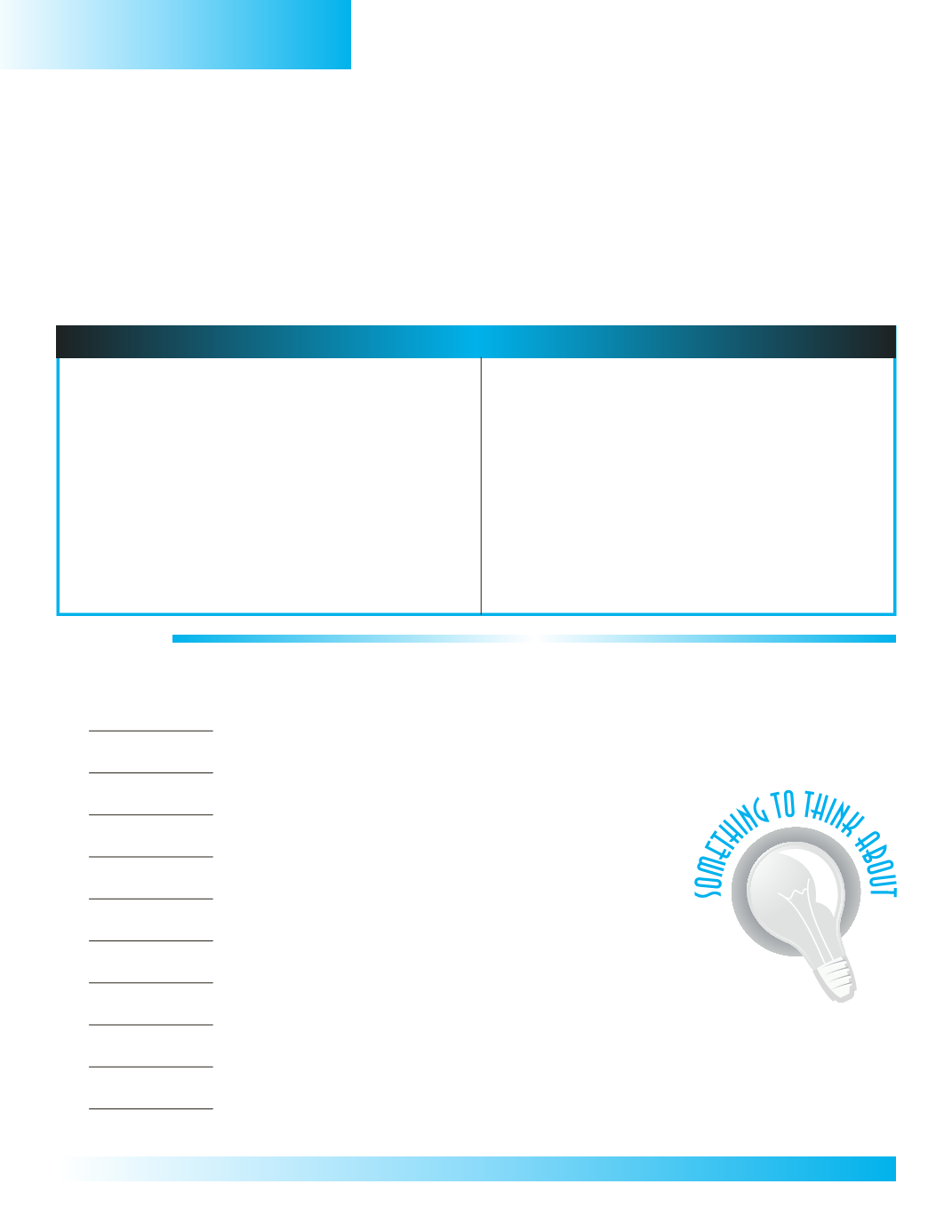
PENNSVALLEY
10
COPYRIGHT
Geography Skills
Lesson 4:
ClimateMaps
In your study of weather and climate you learned that climate is the usual or averageweather a region
receivesovermany years.Actual climate conditionsare calculatedbyaveraging temperaturesandamounts
of precipitation.To show climate conditions throughout the world, scientists have developed climatemaps.
Climatemaps use colors to identify climate conditionswithin each climate type.
In our study of the continents and geographical regions of the Eastern Hemisphere, we will be
using climatemaps in your classroomatlas as a resource.Beforewe refer to the classroomatlas, let’s
review the six climate types listed below in theClimateMap Legend.
ACTIVITY:
Match the following climate conditions to the appropriate climate type above.Write the correct climate
type in the blank space provided.
0
1.
hot, dry summer;mild, rainy winter
0
2.
hot, rain forest
0
3.
long, warm, humid summer; snowy winter
0
4.
ice cap
0
5.
little rainfall
0
6.
hot, humid summer;mild, rainywinter
0
0
7.
short, cool, humid summer; snowy winter
0
8.
lower layers of soil are permanently frozen
0
9.
mild, rainy summer;mild, rainywinter
10.
hot, rain is seasonal
Remember,
your classroom
atlas uses different
colors to represent each
climate condition found
under themajor
climate types.
1.Tropical
• Hot – rain all year (tropical rain forest)
• Hot – rain is seasonal
2. Dry
• Hot Desert – little or no rainfall
• Hot – some rain
3.Moderate/Temperate –mild rainywinter
• Hot, dry summer –Mediterranean
• Hot, humid summer
• Mild, rainy summer
4. Continental – snowywinter
• Long, warm, humid summer
• Short, cool humid summer
• Very short, cool, humid summer
5. Polar
• Tundra (very short, cold summers;
permanently frozen ground)
• IceCap (permanent ice)
6. Highlands andMountainRegions
• Indicates climate conditions
ClimateMap Legend


